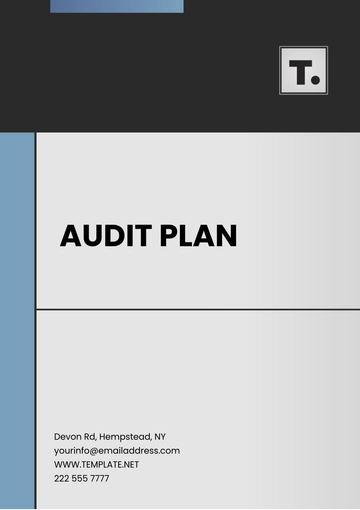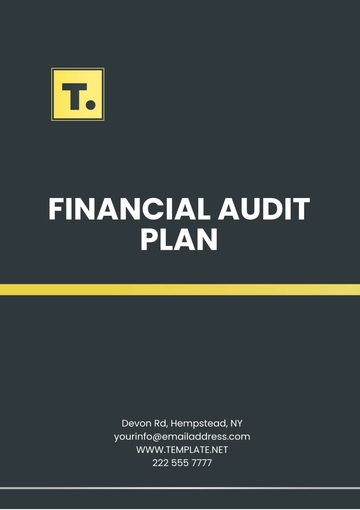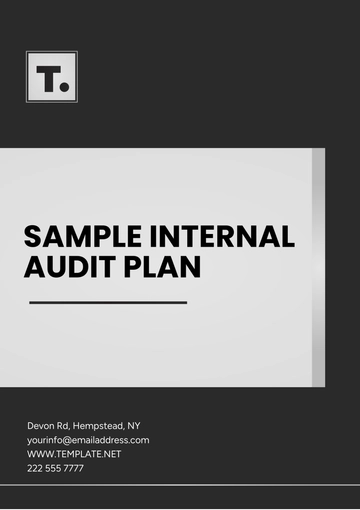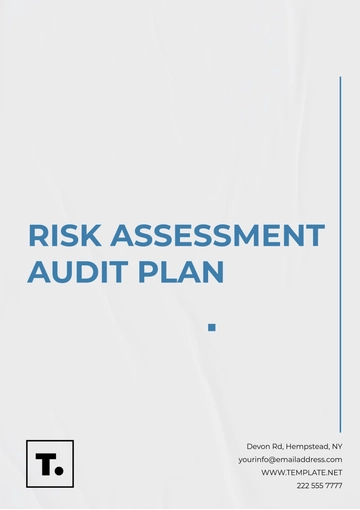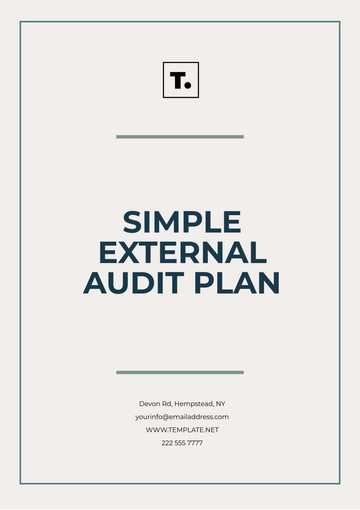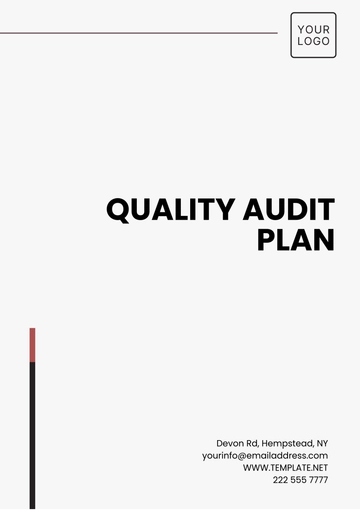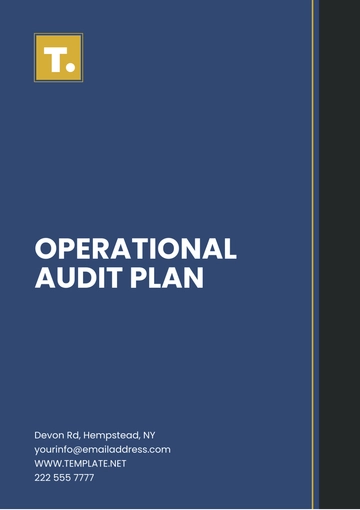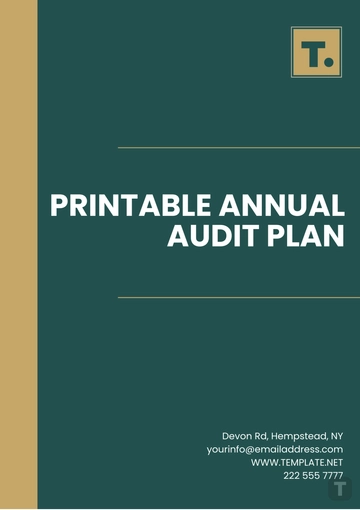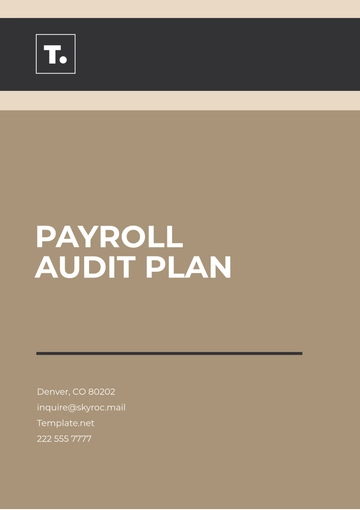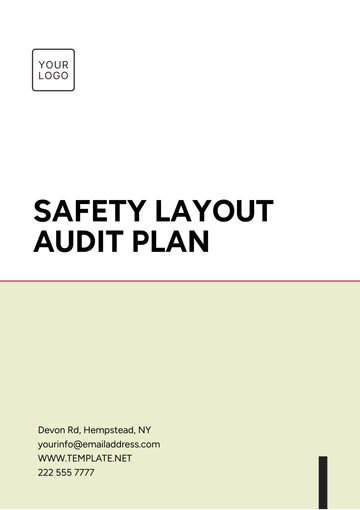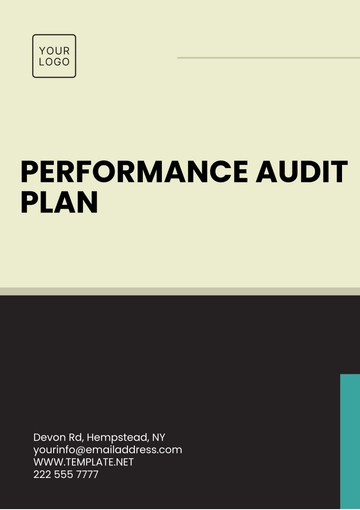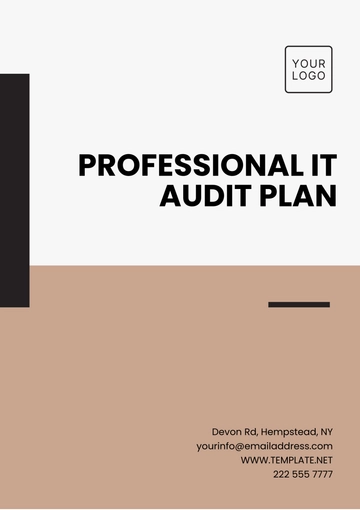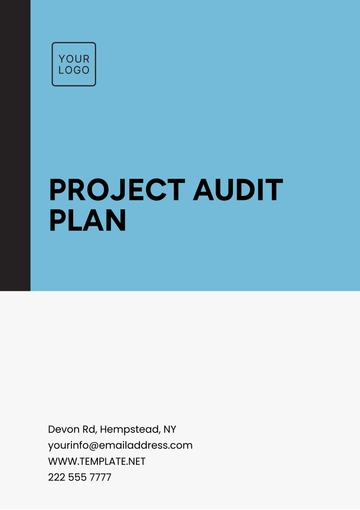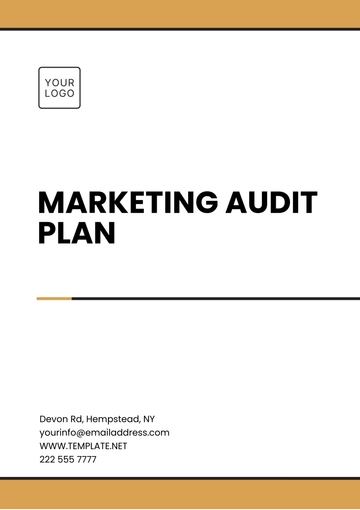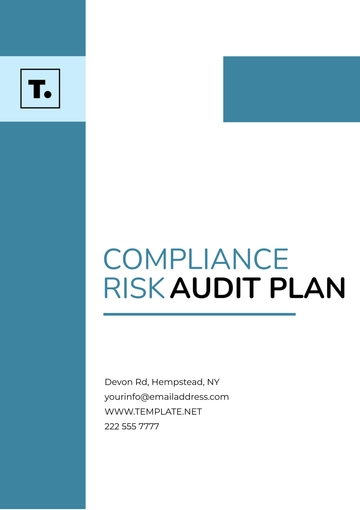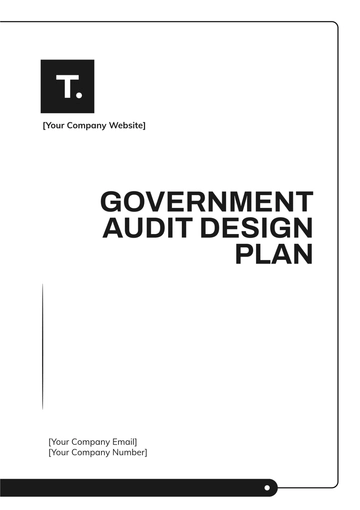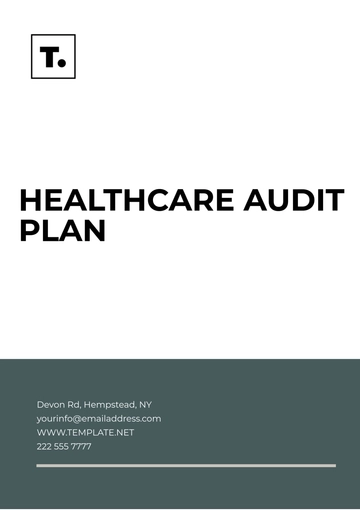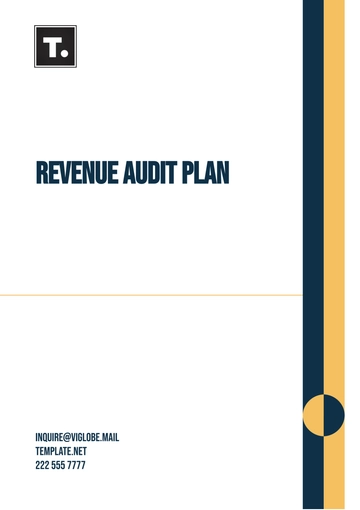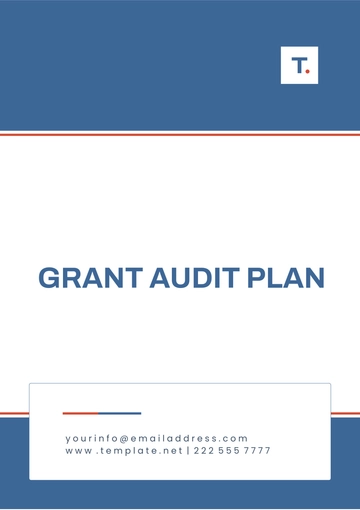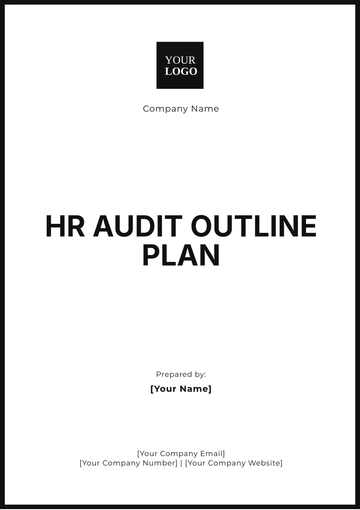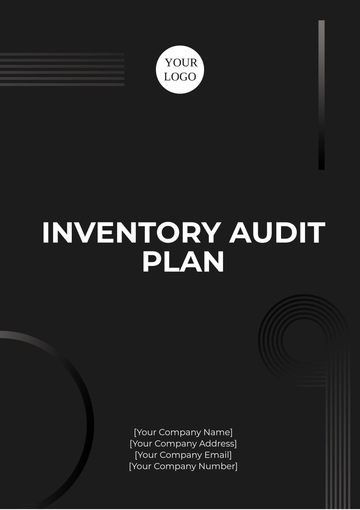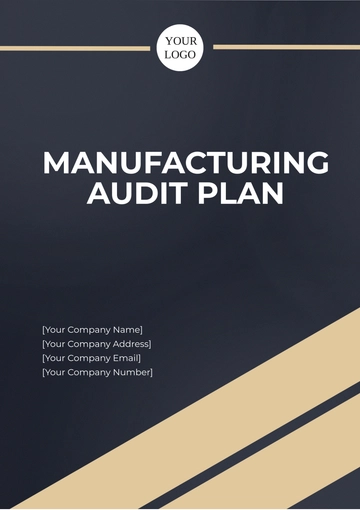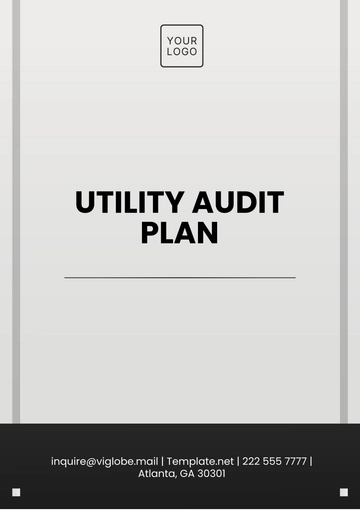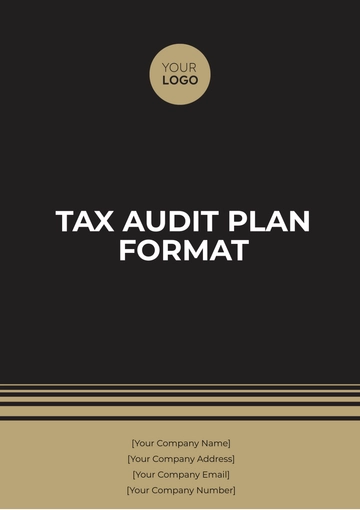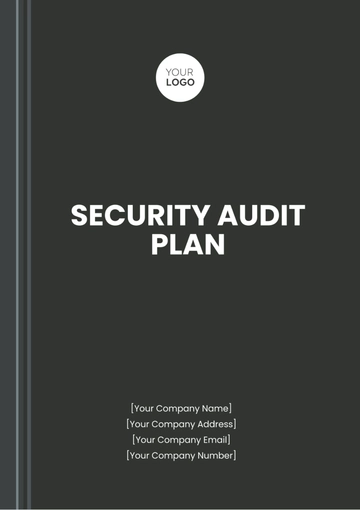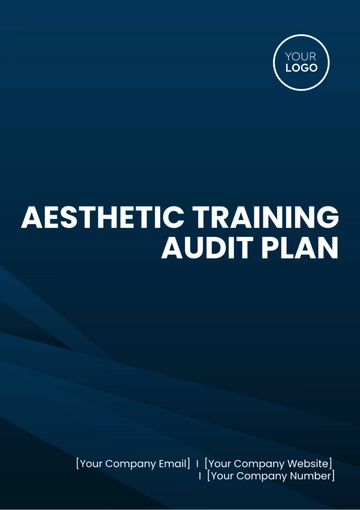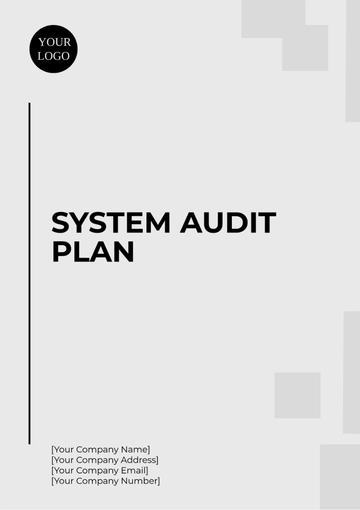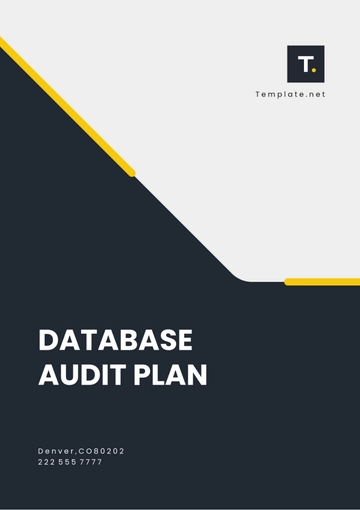Free Audit Work Plan
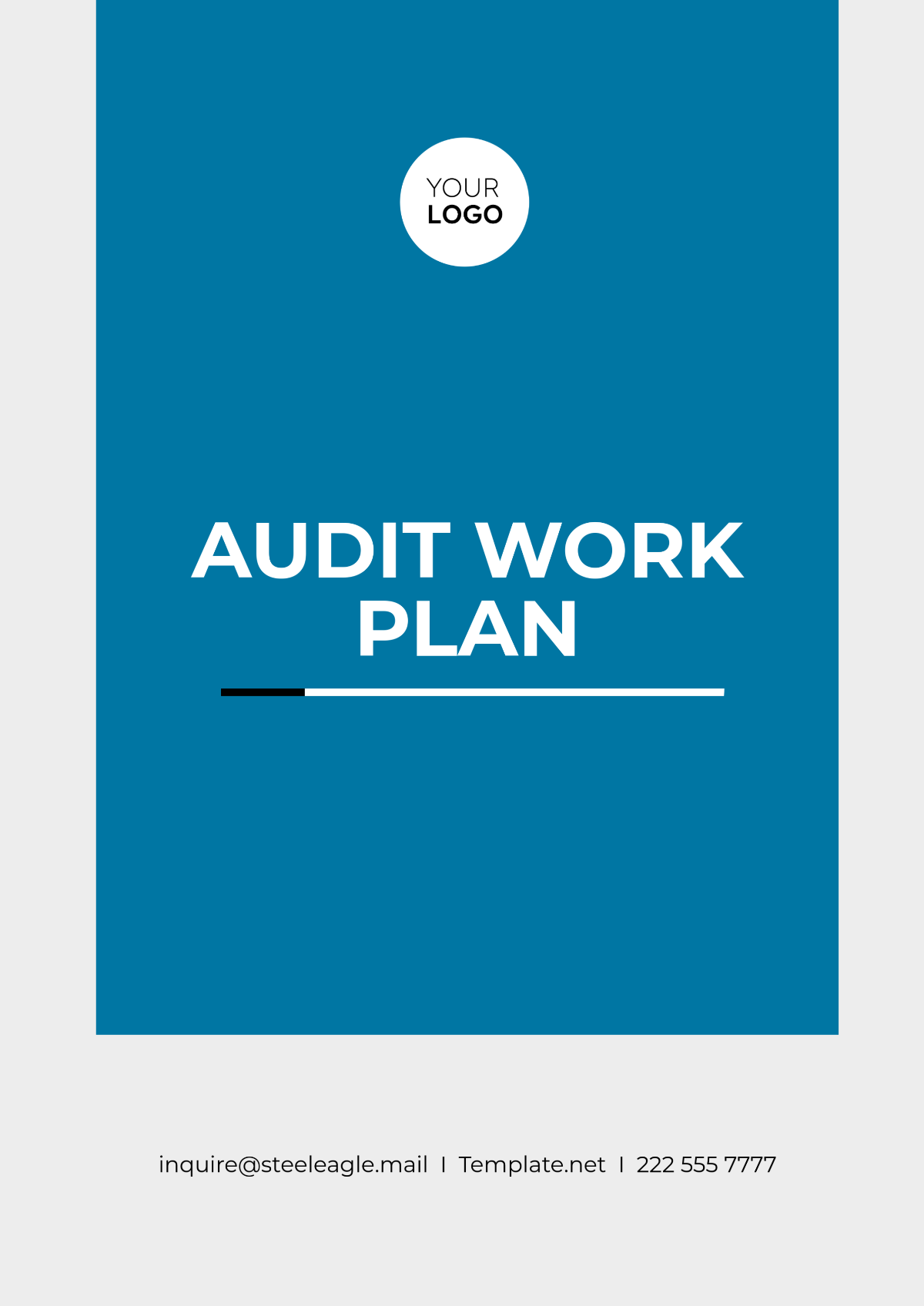
Prepared by: | [YOUR NAME] |
Company: | [YOUR COMPANY NAME] |
Department: | [YOUR DEPARTMENT] |
Date: | [DATE] |
I. Introduction
A. Background
In the last fiscal quarter, our organization underwent a significant restructuring, including changes in leadership within key departments and the adoption of new technological systems. This restructuring was accompanied by updates to industry regulations, particularly in data privacy and cybersecurity standards, impacting our operations.
B. Audit Rationale
The primary objective of this audit is to ensure alignment with the updated regulatory requirements and to assess the effectiveness of the newly implemented systems and processes. Specific reasons for conducting this audit include:
Compliance Verification: Ensure compliance with GDPR and industry standards.
Risk Assessment: Identify risks in new systems, organizational changes, and data management.
Operational Efficiency: Evaluate efficiency in data handling, access controls, and incident response.
Strategic Alignment: Confirm alignment with data protection, resilience, and compliance goals.
C. Scope of the Audit
Inclusions:
Financial Transactions: Audit of financial records for the fiscal year 20XX-20XX to ensure accuracy, compliance, and proper documentation.
HR Practices: Evaluation of HR processes within the XYZ department, including recruitment, training, performance evaluation, and compliance with HR policies and regulations.
IT Security Controls: Assessment of IT security controls for system ABC, including access management, data protection measures, vulnerability assessments, and incident response protocols.
Exclusions
Non-Financial Aspects: Excludes auditing non-financial processes or departments unless directly impacting financial or compliance matters.
Operations Outside Timeline: Activities or events occurring outside the specified audit period are excluded from this audit.
Recently Audited Areas: Areas already audited within the past six months are excluded unless significant changes or issues necessitate reevaluation.
C. Key Stakeholders
The following key stakeholders are involved or impacted by the audit, each with specific roles and responsibilities:
Audit Committee: Oversight and review of audit findings, ensuring compliance with audit standards and regulatory requirements.
Management Team: Cooperation with the audit team, providing necessary resources and access to relevant information and personnel.
Department Heads: Subject matter expertise in respective areas, cooperation during audit procedures, and implementation of audit recommendations within their departments.
External Auditors/Regulatory Bodies: Validation of compliance with external regulations, providing an external perspective on audit processes and findings, and ensuring transparency and accountability.
II. Audit Team and Responsibilities
Role | Name | Responsibilities |
|---|---|---|
Lead Auditor | Jean Harris | Overall audit oversight and final report approval |
Audit Manager | Jerrell Lowe | Supervision of audit procedures and coordination of team |
Audit Assistant | Barry Morar | Data collection and analysis assistance |
III. Audit Methodology
A. Documentation Review
Purpose: To assess the accuracy, completeness, and compliance of documented records related to financial transactions, HR practices, and IT security controls.
Methods:
Review of financial statements, invoices, ledgers, and accounting records.
Examination of HR policies, procedures manuals, employee records, and training documentation.
Evaluation of IT security policies, access logs, system configurations, and incident response plans.
B. Interviews with Key Personnel
Purpose: To gain insights, verify information, and understand processes and controls from personnel directly involved in financial, HR, and IT operations.
Methods:
Conduct structured interviews with department heads, financial managers, HR managers, IT administrators, and relevant staff members.
Ask targeted questions regarding procedures, compliance practices, controls implementation, and incident handling protocols.
C. On-site Inspections
Purpose: To physically assess the implementation of controls, security measures, and compliance with policies in operational environments.
Methods:
Conduct physical walkthroughs of facilities, data centers, and IT infrastructure locations.
Inspect access control mechanisms, data storage areas, equipment security, and adherence to safety protocols.
Verify alignment of actual practices with documented policies and procedures.
D. Data Analysis Techniques
Purpose: To analyze quantitative data, and identify patterns, anomalies, and trends related to financial transactions, HR metrics, and IT security incidents.
Methods:
Utilize data analytics tools for financial data reconciliation, fraud detection, and trend analysis.
Analyze HR data for turnover rates, training completion rates, performance metrics, and compliance indicators.
Use security information and event management (SIEM) tools for analyzing IT logs, detecting cybersecurity threats, and assessing system vulnerabilities.
IV. Timeline and Milestones
Phase | Start - End Date | Deliverables |
|---|---|---|
Planning | January 1, 2050 - January 15, 2050 | Audit Plan Document |
Execution | January 16, 2050 - February 15, 2050 | Fieldwork Findings |
Reporting | February 16, 2050 - February 28, 2050 | Audit Report |
V. Budget and Resources
A. Estimated Budget
Total Estimated Budget: $50,000
B. Resource Allocation
Audit Team:
Lead Auditor: Jean Harris
Audit Manager: Jerrell Lowe
Audit Assistant: Barry Morar
Other Resources:
Travel and Accommodation: $5,000
Data Analysis Tools: $10,000 (licenses for data analytics software)
External Consultants (if applicable): $15,000 (for specialized IT security audit consultancy)
C. Tools and Technologies Used
Audit Management Software: AuditFlow v2.1
Data Analytics Tools: Tableau for data visualization and SQL for data querying
Communication Tools: Slack for team collaboration and Zoom for virtual meetings
Security Tools: Nessus for vulnerability scanning and Splunk for log analysis
VI. Risks and Mitigation Strategies
A. Risk Assessment
Data Security Breaches:
Risk: Unauthorized access to sensitive audit data during the audit process.
Mitigation: Implement strict access controls, encryption for sensitive data, and regular security audits of audit systems.
Resource Constraints:
Risk: Insufficient team resources or budget limitations impacting audit quality and timelines.
Mitigation: Regular resource allocation reviews, prioritize critical tasks, and leverage automation tools for efficiency gains.
Scope Creep:
Risk: Expansion of audit scope beyond initial objectives, leading to project delays and increased costs.
Mitigation: Maintain clear documentation of audit scope, conduct regular scope reviews, and obtain approvals for any scope changes.
B. Contingency Planning
Technical Failures:
Risk: System outages or data loss during data analysis or reporting phases.
Contingency: Regular data backups, redundant systems for critical processes, and a documented incident response plan.
Key Personnel Unavailability:
Risk: Key team members being unavailable due to unforeseen circumstances.
Contingency: Cross-training team members, maintaining updated documentation, and having backup personnel identified for critical roles.
C. Risk Mitigation Measures
Regular Audits and Reviews: Conduct periodic audits of audit processes and documentation.
Stakeholder Communication: Maintain regular communication with stakeholders to address concerns and ensure alignment with audit objectives.
Training and Development: Provide ongoing training to audit team members on new tools, regulations, and best practices.
VII. Appendices
Appendix A: Audit Tool Documentation
Description: Detailed documentation of the audit tools and software used during the audit process, including their functionalities, configurations, and version information.
Contents: User manuals, configuration guides, screenshots of tool interfaces, and any customization details relevant to the audit.
Appendix B: Interview Schedules
Description: Scheduled interviews with key personnel as part of the audit process to gather information, and insights, and verify procedures.
Contents: Interview schedules specifying interviewee names, roles, interview questions or topics, interview dates, and locations.
Appendix C: Historical Audit Reports
Description: Previous audit reports relevant to the current audit scope or areas of interest for comparative analysis and trend identification.
Contents: Copies of historical audit reports, audit findings, recommendations, management responses, and any follow-up actions taken.
- 100% Customizable, free editor
- Access 1 Million+ Templates, photo’s & graphics
- Download or share as a template
- Click and replace photos, graphics, text, backgrounds
- Resize, crop, AI write & more
- Access advanced editor
Secure precision with our Audit Work Plan Template from Template.net. This editable and customizable resource streamlines auditing processes, ensuring thoroughness and efficiency. Seamlessly adjust criteria and timelines using our intuitive Ai Editor Tool, optimizing audits to meet specific requirements. Simplify complex tasks and enhance accuracy with a tailored plan that aligns with your organization's auditing standards and goals.
You may also like
- Finance Plan
- Construction Plan
- Sales Plan
- Development Plan
- Career Plan
- Budget Plan
- HR Plan
- Education Plan
- Transition Plan
- Work Plan
- Training Plan
- Communication Plan
- Operation Plan
- Health And Safety Plan
- Strategy Plan
- Professional Development Plan
- Advertising Plan
- Risk Management Plan
- Restaurant Plan
- School Plan
- Nursing Home Patient Care Plan
- Nursing Care Plan
- Plan Event
- Startup Plan
- Social Media Plan
- Staffing Plan
- Annual Plan
- Content Plan
- Payment Plan
- Implementation Plan
- Hotel Plan
- Workout Plan
- Accounting Plan
- Campaign Plan
- Essay Plan
- 30 60 90 Day Plan
- Research Plan
- Recruitment Plan
- 90 Day Plan
- Quarterly Plan
- Emergency Plan
- 5 Year Plan
- Gym Plan
- Personal Plan
- IT and Software Plan
- Treatment Plan
- Real Estate Plan
- Law Firm Plan
- Healthcare Plan
- Improvement Plan
- Media Plan
- 5 Year Business Plan
- Learning Plan
- Marketing Campaign Plan
- Travel Agency Plan
- Cleaning Services Plan
- Interior Design Plan
- Performance Plan
- PR Plan
- Birth Plan
- Life Plan
- SEO Plan
- Disaster Recovery Plan
- Continuity Plan
- Launch Plan
- Legal Plan
- Behavior Plan
- Performance Improvement Plan
- Salon Plan
- Security Plan
- Security Management Plan
- Employee Development Plan
- Quality Plan
- Service Improvement Plan
- Growth Plan
- Incident Response Plan
- Basketball Plan
- Emergency Action Plan
- Product Launch Plan
- Spa Plan
- Employee Training Plan
- Data Analysis Plan
- Employee Action Plan
- Territory Plan
- Audit Plan
- Classroom Plan
- Activity Plan
- Parenting Plan
- Care Plan
- Project Execution Plan
- Exercise Plan
- Internship Plan
- Software Development Plan
- Continuous Improvement Plan
- Leave Plan
- 90 Day Sales Plan
- Advertising Agency Plan
- Employee Transition Plan
- Smart Action Plan
- Workplace Safety Plan
- Behavior Change Plan
- Contingency Plan
- Continuity of Operations Plan
- Health Plan
- Quality Control Plan
- Self Plan
- Sports Development Plan
- Change Management Plan
- Ecommerce Plan
- Personal Financial Plan
- Process Improvement Plan
- 30-60-90 Day Sales Plan
- Crisis Management Plan
- Engagement Plan
- Execution Plan
- Pandemic Plan
- Quality Assurance Plan
- Service Continuity Plan
- Agile Project Plan
- Fundraising Plan
- Job Transition Plan
- Asset Maintenance Plan
- Maintenance Plan
- Software Test Plan
- Staff Training and Development Plan
- 3 Year Plan
- Brand Activation Plan
- Release Plan
- Resource Plan
- Risk Mitigation Plan
- Teacher Plan
- 30 60 90 Day Plan for New Manager
- Food Safety Plan
- Food Truck Plan
- Hiring Plan
- Quality Management Plan
- Wellness Plan
- Behavior Intervention Plan
- Bonus Plan
- Investment Plan
- Maternity Leave Plan
- Pandemic Response Plan
- Succession Planning
- Coaching Plan
- Configuration Management Plan
- Remote Work Plan
- Self Care Plan
- Teaching Plan
- 100-Day Plan
- HACCP Plan
- Student Plan
- Sustainability Plan
- 30 60 90 Day Plan for Interview
- Access Plan
- Site Specific Safety Plan
